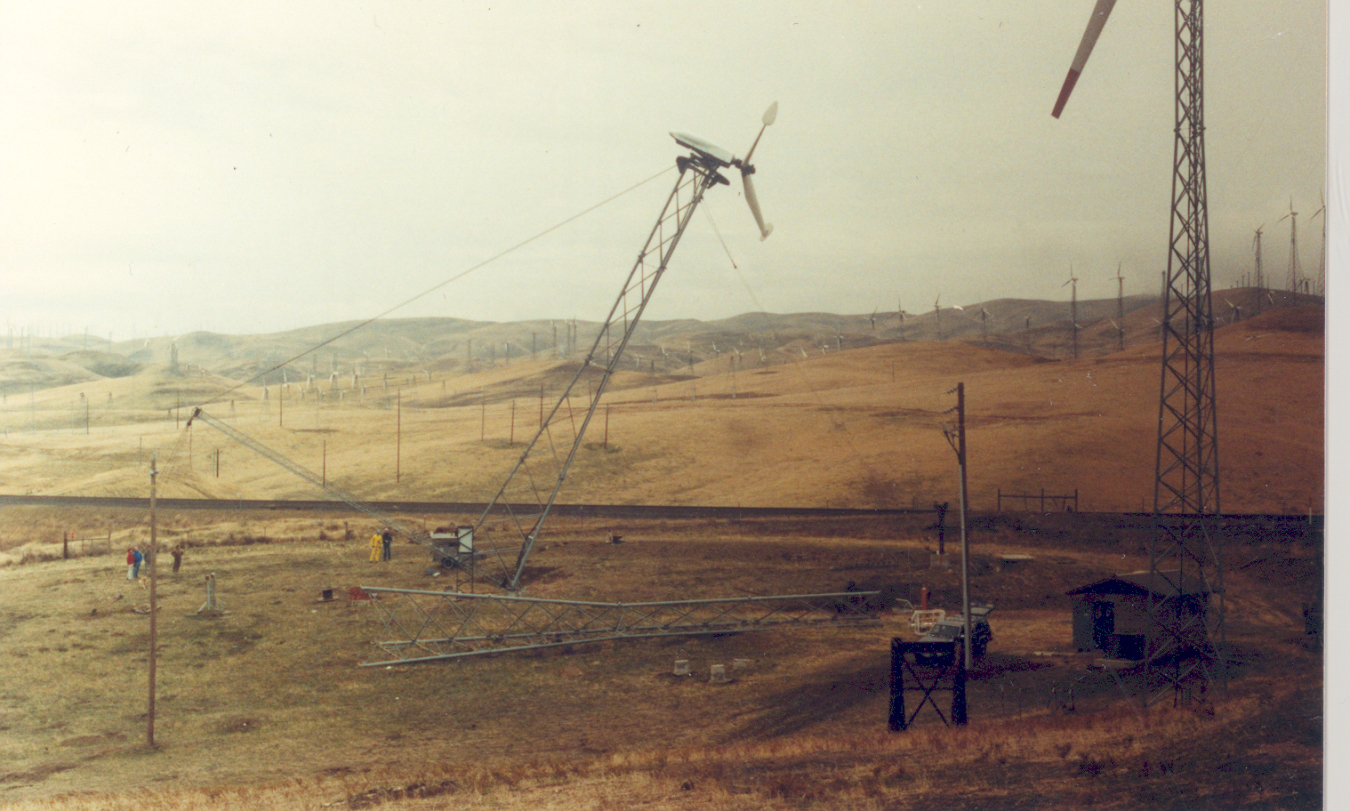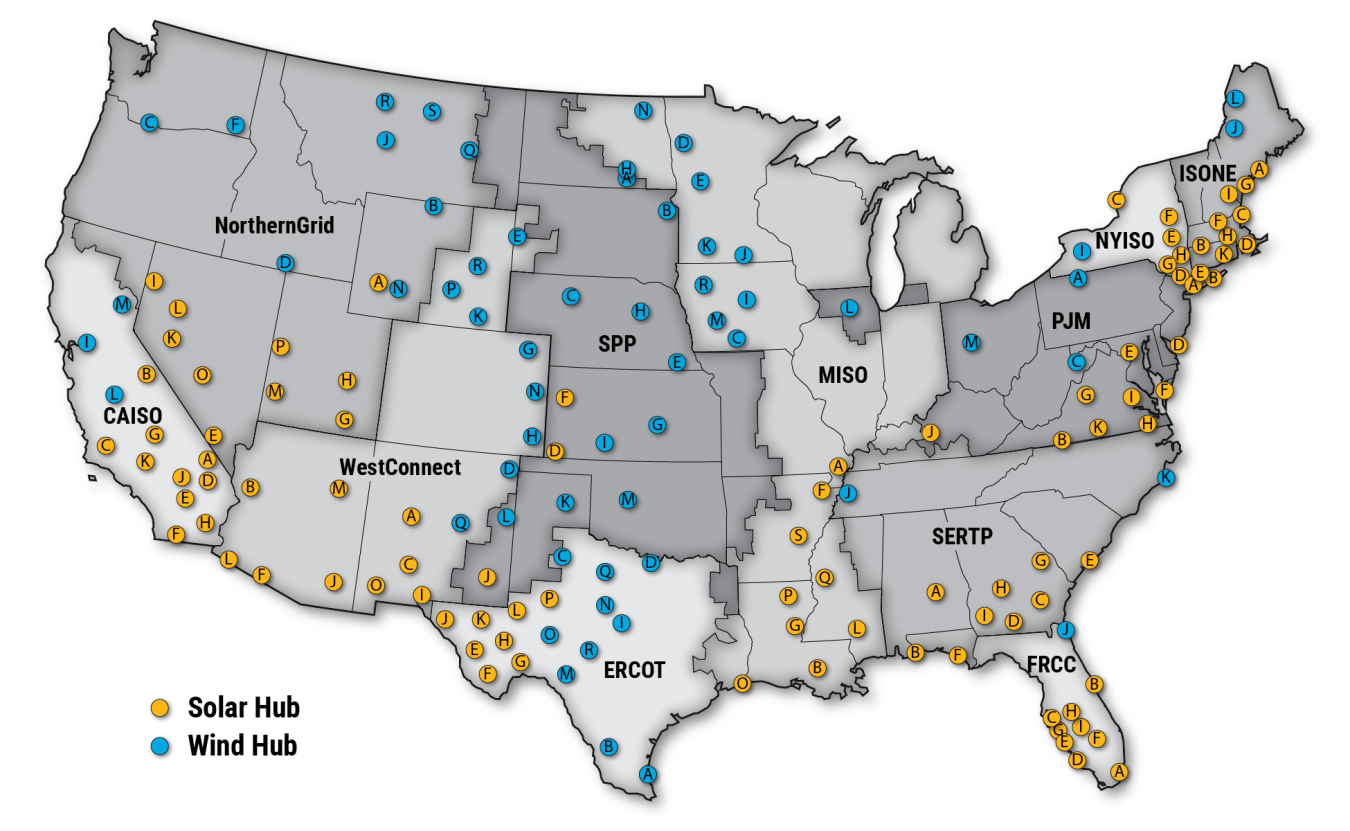The Wind Turbine Verification Program, established in 1993, introduced electric utilities to emerging wind turbine technologies, created more confidence in wind power, and helped wind energy become the robust renewable energy resource it is today.
Wind Energy Technologies Office
September 26, 2023By introducing the electric utility industry to emerging wind turbine technologies, the Wind Turbine Verification Program (TVP) gave utilities more confidence in wind power as a source of generation and helped pave the way for ongoing growth of commercial wind power since the late 1990s.
The TVP was developed by the U.S. Department of Energy's Wind Energy Technologies Office (WETO and the Electric Power Research Institute (EPRI) in 1993. As a public–private collaboration, the TVP helped wind energy move into the commercial marketplace and become the robust renewable energy resource it is today.
Early Technology Shows Problems—and Promise
The modern era of commercial wind power project development in the United States began in the early 1980s. Fueled by federal and state investment tax credits, many wind energy installations emerged first in California, but most projects employed early-stage, untested wind turbine technology.
By the mid-1980s, the credibility of wind power as a viable prospective source of commercial electricity in the United States suffered because of poor performance by the novel technologies. As a result, federal and state tax credits expired, and wind energy startups failed.

In the 1980s, wind power plants appeared across California, but most employed early-stage, untested wind turbine technology. Shown here is Altamont Pass Wind Resource Area near San Francisco, California, one of the nation’s first commercial wind developments. Photo by Walter Musial, NREL
Despite this downturn, several wind turbine manufacturers—with most using financial and technical assistance from WETO—continued to develop a new generation of wind turbines that promised better reliability and lower costs.
Program Introduces Wind Energy to the Electric Sector
By the early 1990s, WETO and EPRI recognized the need to introduce and socialize recent progress in wind energy technology to the electric sector. As a result, EPRI and WETO formed the TVP through a 1993 memorandum of understanding.
The TVP’s objectives were to:
- Provide a platform for evaluating emerging precommercial utility-scale wind turbines in realistic utility operating environments.
- Engage forward-thinking electric utilities in turbine-testing projects to evaluate and verify wind power technology.
- Enable first-hand utility experience with new wind energy technologies and help commercialize wind turbines.
In 1993, EPRI issued a request for proposals to the domestic electric utility industry that asked respondents to provide a grid-connected testing platform and evaluation program for a precommercial wind turbine. EPRI also asked respondents to propose comprehensive programs that included:
- Wind turbine selection and procurement
- Turbine installation and validation
- Facility operation and maintenance
- Project documentation
- Participation in technology- and experience-transfer activities.
Funding for the turbines, installation, associated equipment, and program operation was provided by EPRI (25%), DOE (25%), and the host utility (50%). This arrangement offered host utilities a way to gain in-depth experience with state-of-the-art wind energy technology at substantially reduced costs.
Two utilities were competitively selected:
- Central and Southwest Services of Dallas, Texas, which evaluated 10 Zond Energy Systems 500-kilowatt (kW) turbines that were installed in Fort Davis, Texas, from 1995 through 1999.
- Green Mountain Power of Vermont, which evaluated 11 Zond 550-kW turbines that were installed in Searsburg, Vermont, from 1996 through 2000. This project continues to operate commercially today.
Program Improves Turbine Technology
A subsequent TVP solicitation focused on testing and evaluating turbines connected directly to utility distribution systems.
Two utilities were selected for these projects, which operated as part of TVP from 1998 through 2001:
- Nebraska Public Power District of Columbus, Nebraska, which installed and evaluated two Zond Z-50 750-kW turbines in Springview, Nebraska. The project helped pave the way for the utility's 60-megawatt commercial project that became operational in 2005 in nearby Ainsworth, Nebraska.
- Cedar Falls Utilities of Cedar Falls, Iowa, which installed and evaluated three Zond Z-50 750-kW turbines in Algona, Iowa. This project is still operating today.
Two grid-connected Zond Z-50 750-kW turbines were installed by Nebraska Public Power District in Springview, Nebraska, as part of the DOE-EPRI Wind Turbine Verification Program. The turbines employed large-diameter rotors with variable speed and pitch operation to increase efficiency compared with prior turbine models. This research resulted in wide-scale adoption of similar technology in commercial wind turbines. Photo by Warren Gretz, NREL 08200
When compared to earlier wind turbines, the Z-50 turbine—Zond's first commercial machine employing power-electronic variable-speed technology—could capture more energy with less wear and tear through reduced turbine mechanical and aerodynamic loads. After evaluating this new technology and sharing the results publicly, these TVP projects deployed power-electronic variable-speed technology on a wide scale in commercial wind turbines.
Many utilities participating in the TVP became major players in today’s wind power arena. For example:
- Central and Southwest Services merged with American Electric Power, which contributes to wind generation in Iowa and Texas.
- Green Mountain Power continues to develop wind power in Vermont.
- The Wisconsin utilities that participated in the Glenmore project and Nebraska Public Power District, along with other Nebraska utilities now operate hundreds of megawatts of wind generation in their respective states.

This map shows the locations of all TVP projects highlighted in the EPRI Report 1014488. Image by John Frenzl, NREL
Program Contributes to Today's Robust Wind Energy Industry
Prior to the creation of the TVP, the U.S. wind energy research community had little publicly available performance data from actual operating projects. TVP projects collected data through host utilities and received independent supervisory control and data acquisition systems (SCADA) to allow for consistent data collection. These systems provided DOE, NREL, and EPRI access to a large database for use in performance analysis and related research.
The TVP made critical contributions to wind energy's rapid expansion in the 1990s and into the turn of the century. This ongoing expansion was subsequently encouraged by continuation of the wind energy Production Tax Credit and emerging Renewable Portfolio Standards.
The TVP, in part, brought wind energy technologies from their primitive 1980s forms to the advanced turbines we see today, supporting the emergence of a strong U.S. turbine manufacturing sector, commercializing several wind turbines, and providing manufacturers with critical lessons learned. Supplementary investigations funded primarily by DOE and NREL, also provided significant contributions in turbine lightning protection, power performance testing standards, cold weather operation, and wind power plant lighting configurations.
The TVP helped establish today's wind energy industry by getting it incorporated into electricity providers' energy sources. The program enabled utilities to build confidence in wind power and realize that integrating it into their networks established commercial relationships between participating utilities and wind turbine manufactures and helped build their knowledge about wind energy technology, its integration into operations, and wind power plant permitting processes.
Without the program, public awareness and acceptance of wind power may have stalled along with some of those first turbines in California.

